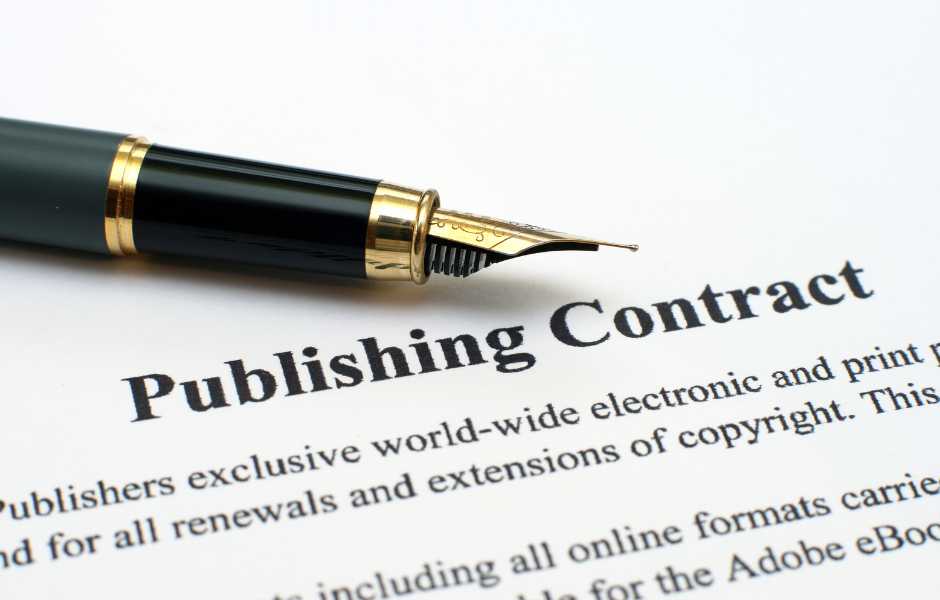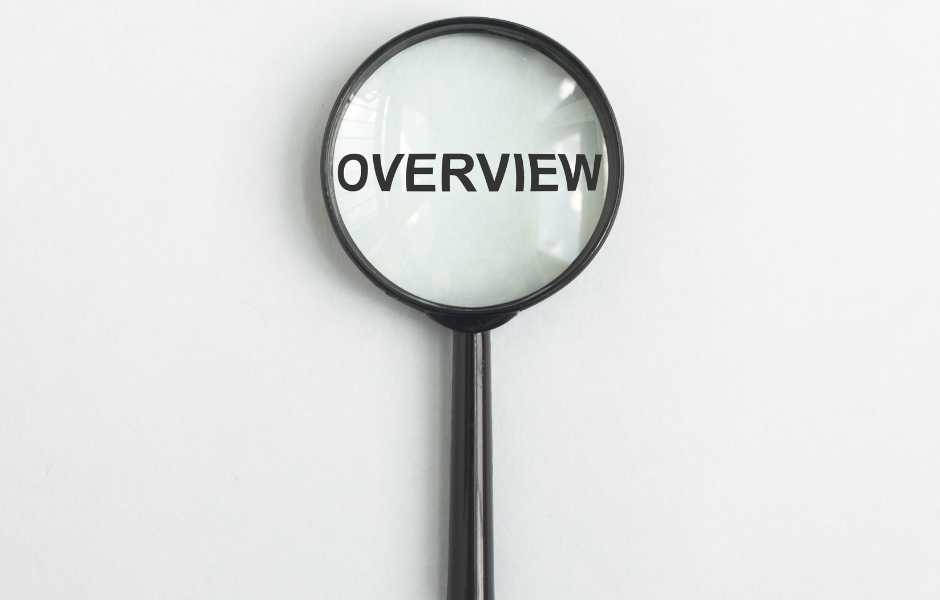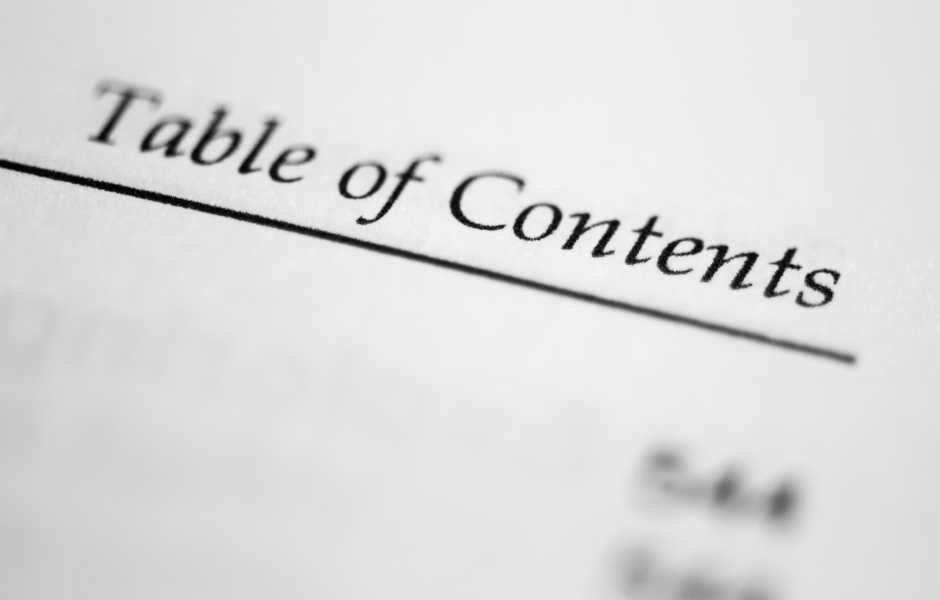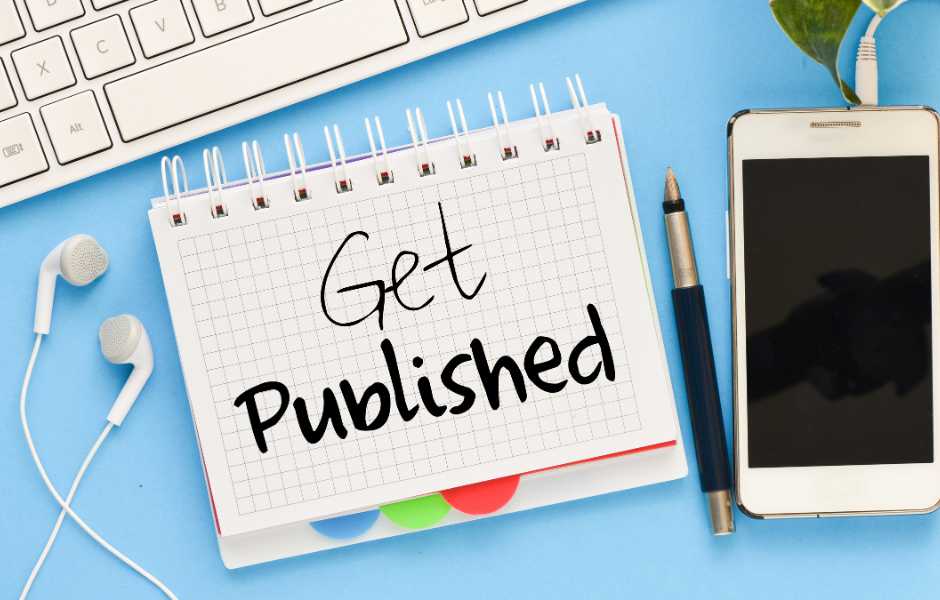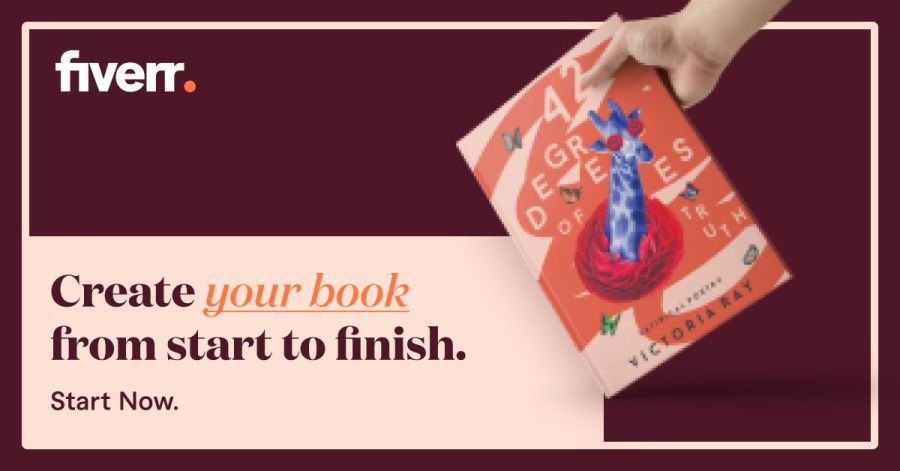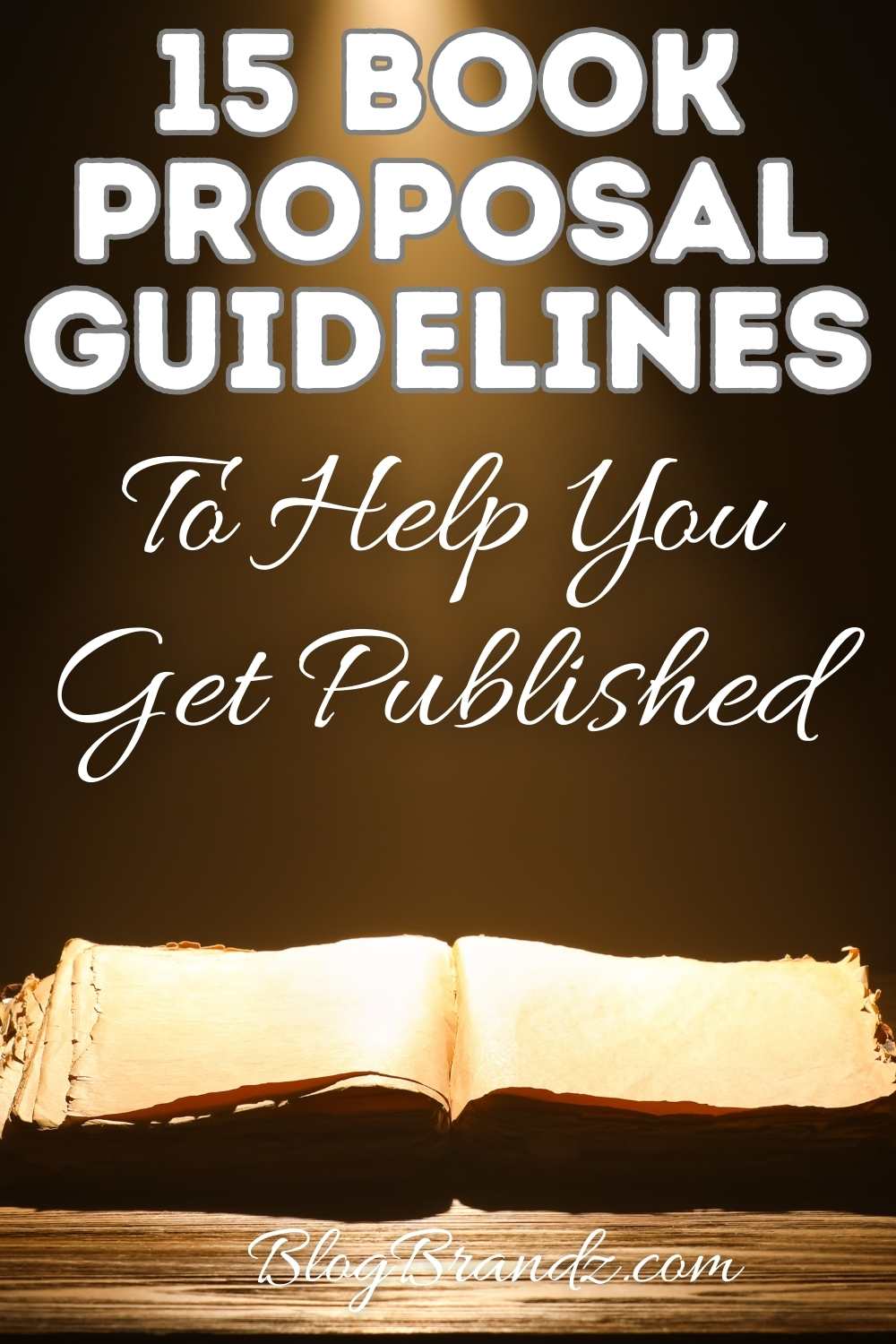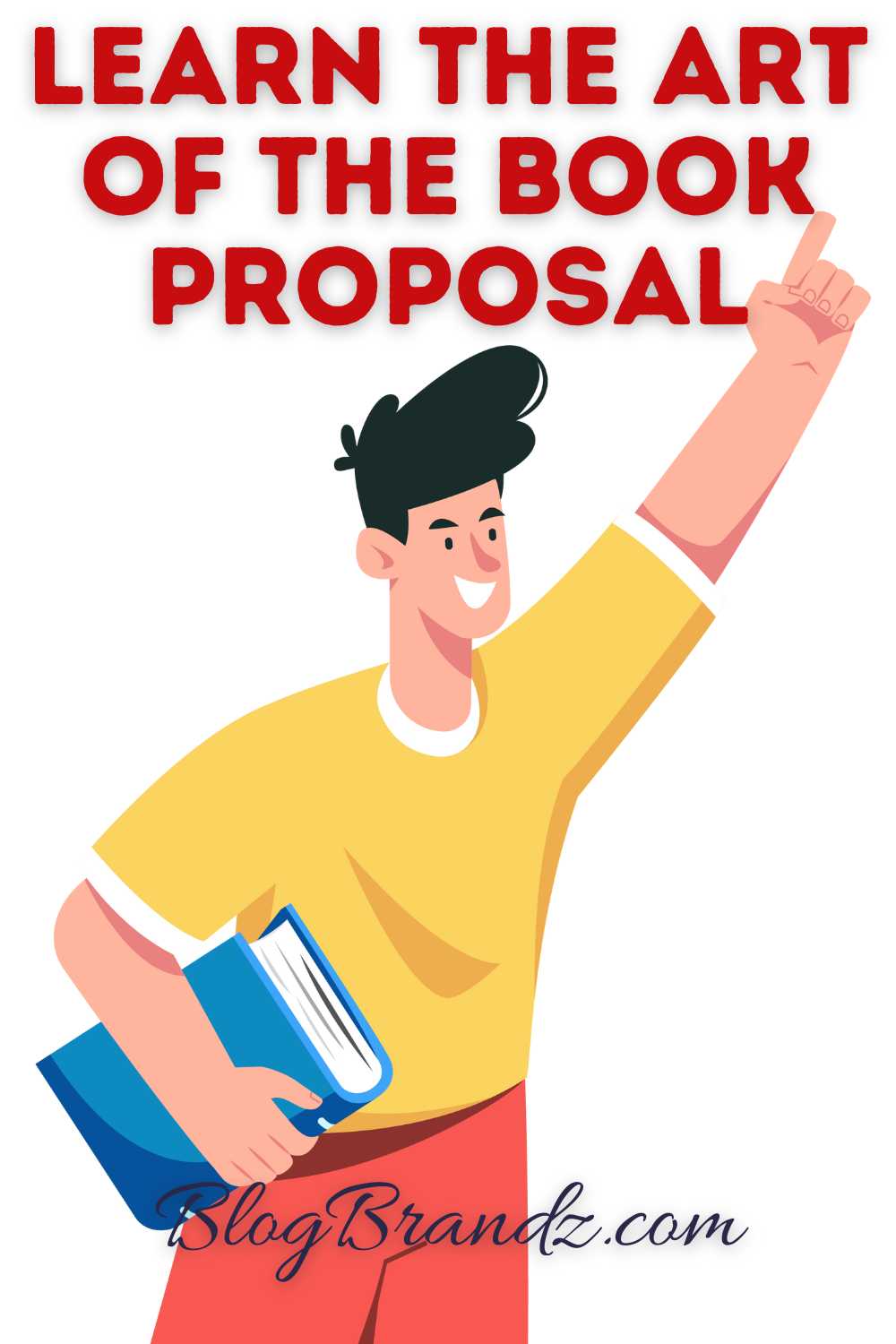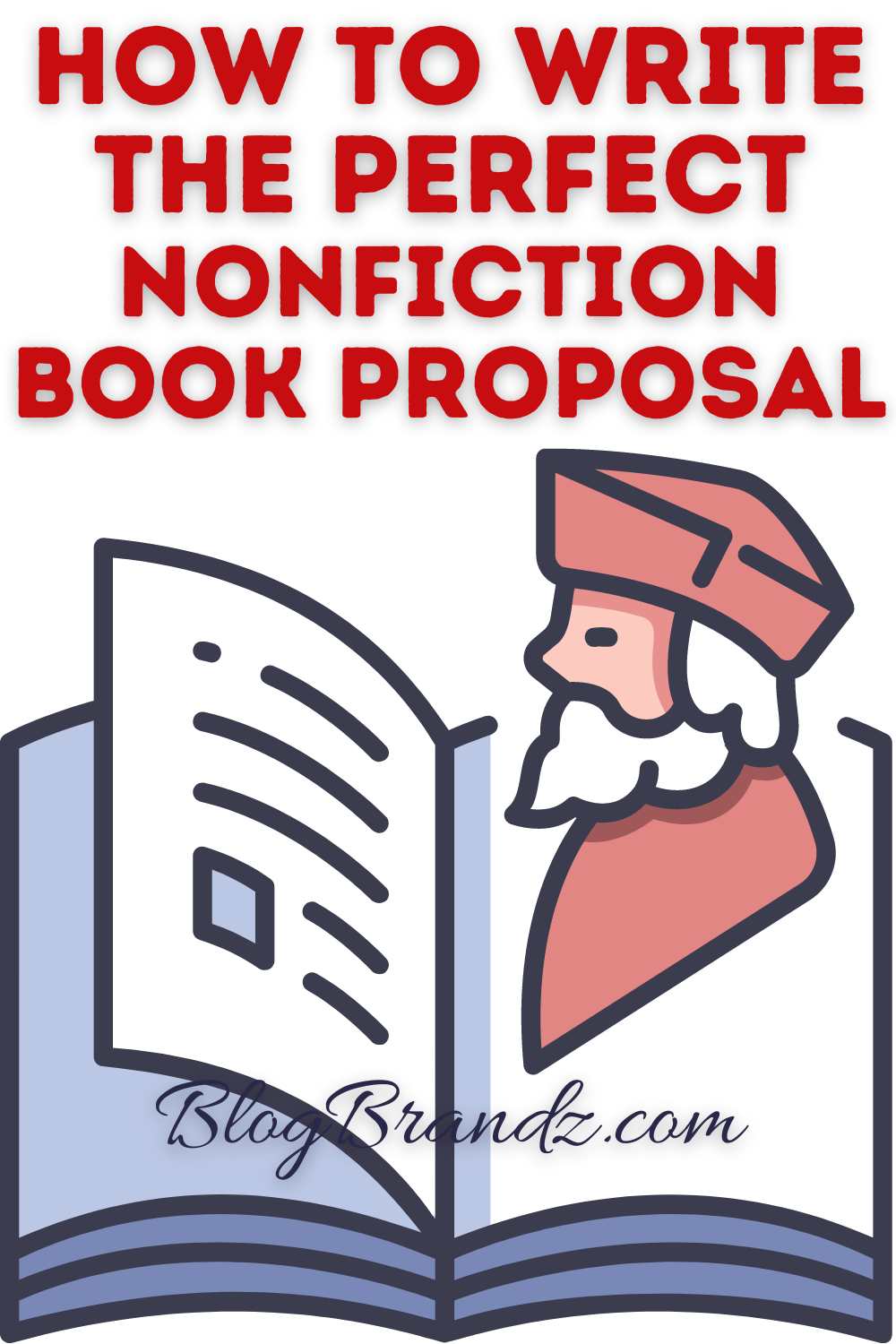
Looking to have a traditional publisher publish your nonfiction book? Learn how to write the perfect nonfiction book proposal that sells.
To acquire a traditional publishing agreement and get literary agents and publishers to take an interest in your nonfiction book concept, you need to write a compelling nonfiction book proposal.
Submitting a book proposal to a publisher should not be taken lightly. It’s important to give your nonfiction book proposal the attention it deserves since the publisher’s decision to take a financial risk on your book will hinge on the quality of your proposal.
Writing a nonfiction book proposal that sells should be your primary focus before writing your query letter and sending a book to publishers, as it’s a task that can take several days, even weeks.
There are several types of non-fiction proposals that you can write, such as academic book proposals, textbook proposals, memoir book proposals, biography book proposals, self-help book proposals, cookbook proposals, and more.
Mastering the art of writing persuasive proposals for book publication demonstrates your familiarity with your target demographic, their needs and interests, and your strategies for effectively reaching them.
Contents
How to Write a Nonfiction Book Proposal That Sells
Keep reading for a checklist outlining the essential components of a book proposal. Master these steps and you’ll significantly enhance your chances of securing a book contract.
Here’s a step-by-step guide along with a book proposal format for writing a winning book proposal that sells:
#1. Start with a Strong Synopsis
Your book proposal’s synopsis or introduction is where you can hook the reader and keep them reading until the end. The first paragraph should contain a summary that aims to captivate the publisher’s attention.
Think carefully about what you should write in the synopsis of your book as this is what will go in your Amazon book description and on the inside cover of your published book.
Create a synopsis that is both brief and intriguing to serve as a literary magnet and lure the reader deeper into your world. This is where you can really make an impression on publishers by explaining the central idea of your book and why it’s so important in the literary world right now.
Give a clear image of the value of your nonfiction book by explaining how it solves a real problem or meets a pressing need. Your book proposal overview should bring to light the heartstrings or brainwaves your book pulls and explain why it will touch readers so deeply that they can’t wait to read more.
Takeaway: Begin your nonfiction book proposal with a captivating overview of your book idea. This should be a concise and engaging description of your book’s concept, its significance, and why it will resonate with readers. Think of this as your “hook” to grab the reader’s attention.
#2. Write a Captivating Author Bio
Offer additional information about yourself in the About the Author section of your proposal. Writing a captivating narrative about why you’re the person best suited to bring this book to life is what the author bio section is all about. You can write in the third person or first person, depending on what you prefer.
Showcase your storytelling chops by highlighting your writing experience and skills to demonstrate your competence in the area. Include your qualifications, any prior publications, public speaking experience, and any media-related background.
Additionally, highlight what makes you the perfect author by discussing the personal connection or passion that inspires your dedication to this endeavor. Prove to the publisher that you have the expertise, credibility, and commitment to write a book that will truly touch the lives of your intended readers.
Takeaway: Introduce yourself as the author. Highlight your relevant qualifications, expertise, and any previous publications or writing experience. Explain why you’re the right person to write this book.
#3. Research your Target Audience
Providing a clear picture of your book’s target demographic helps publishers visualize its commercial possibilities. Learn as much as you can about your target audience by digging into demographic and psychographic data.
Create a clear picture of your book’s target audience by defining your target demographic in terms of gender, age, political beliefs, religion, nationality, education level, economic status, and even country. Look deeper than just demographics to learn about your target audience by learning about their values, interests, and goals.
Be specific and back your assertions with data, avoiding vague statements. Focus on the psychographics of your audience – why they would be interested in your book, and what desires and needs it fulfills. Specify who will buy your book and why.
Your book’s marketability and its potential to connect honestly with a devoted, receptive readership will be strengthened by showing that you’ve taken into account the specific requirements and interests of your target audience.
Takeaway: Describe the specific audience your book is intended for. Provide demographic and psychographic information about your target readers. Publishers want to know who will buy your book.
#4. Perform a Market Analysis
The backbone of a successful book proposal is a market study that has been painstakingly compiled through research. Start with a market overview, detailing the current state of the industry and any relevant published works.
Disclose information on sales, which would demonstrate interest in your work. But don’t stop there; emphasize how your book stands out from the crowd. Explain how your work is going to outperform or improve upon the competition by shedding light on the distinctive perspective, new ideas, or novel method that you took.
You can use KDSPY’s power tools for authors to perform competitor research, AI market intelligence, keywords, revenue metrics, book tracking, and more to uncover profitable book topics in just a few clicks.
This is one of the best tools an author can have in their toolbox for finding the right category to get ranked in, identifying keywords, and tracking your books and those of other authors for sales ranking.
Your diligence will shine through, and your publisher will rest easy knowing that you’ve done the legwork to ensure that your book fills a niche and gives something new and interesting to readers.
Takeaway: Conduct research to demonstrate that there is a market for your book. Include data on similar books in the market, their sales figures, and how your book differs or improves upon them. This shows that you’ve done your homework and understand the competitive landscape.
#5. List Comparative Titles
Include a section titled “Competition” where you present existing books that are comparable to yours. Reference popular works and provide information about the number of copies sold if available.
Use this information to demonstrate the market’s interest in the topic. Then explain what sets your book apart from the competition, supported by demographic studies if applicable. Avoid making claims like “nothing like my book has ever been written before.”
By recommending other works that are like yours, you’re giving publishers a better idea of your work’s intended audience and specialty. However, this isn’t an exercise in merely naming other books; rather, it’s an opportunity to highlight your book’s strengths.
Explain in detail what makes your work stand out from the others, be it an original angle, more thorough research, a unique narrative style, or insightful new information. Give reasons why your work is superior to others in the genre, such as newer facts, a more interesting writing style, or a fresh take on pressing issues.
Showing that you know where your book fits in the market and what makes it stand out from the competition is an effective way to attract the attention of publishers and increase the likelihood that they will offer you a publishing contract.
Takeaway: List books that are similar to yours and explain how your book is different or better. This helps publishers understand where your book fits in the market.
#6. Provide a Table of Contents
The table of contents is the roadmap for your book, giving editors and publishers an overview of the entire text at a glance. Each chapter’s summary sheds light on the story’s overall development and themes.
It not only aids publishers in visualizing the book’s flow but also draws attention to major topics, guaranteeing that the work is appropriate for its target readers. This section exemplifies your ability to organize and tell a tale while also conveying the breadth and consistency of your work.
In addition, it provides a tantalizing preview of the information and ideas that await the reader within. Your proposal will be much more appealing to publishers if you take the time to create a thorough table of contents for it.
Takeaway: Provide a detailed table of contents for your book. Each chapter should have a brief description. This gives a clear idea of the book’s structure and content.
#7. Include Sample Chapters
A book proposal that includes sample chapters is like delivering a tantalizing taste of the complete banquet that your book offers. Include a list of recommended chapter titles and provide brief summaries of their contents.
Include the first two or three chapters of your planned manuscript in your book proposal. This is particularly crucial for first-time authors, as it demonstrates your ability to complete the book on schedule. Choose chapters that are representative of your writing style and that also convey the core ideas of your book.
These sections provide an opportunity to showcase your storytelling skills and drive the reader deeper into the story. Doing so will not only show off your writing skills but will also give potential buyers an idea of what it will be like to read your book.
To increase the likelihood of your proposal being enthusiastically accepted, you can use these chapters as a tantalizing teaser to entice publishers with the promise of an engaging and immersive reading experience.
Takeaway: Include one or more sample chapters to showcase your writing style and the quality of your work. Choose chapters that are engaging and representative of the book’s overall theme.
#8. Formulate a Book Marketing Plan
A comprehensive book marketing and promotion plan is a critical part of your book proposal because, in today’s publishing world, author participation in book promotion is essential. This will show publishers that you’re committed to helping increase interest in and demand for your book.
Jack Canfield, the world’s most successful non-fiction author, has over 500 million volumes in print. He has had 47 books on the New York Times Best Seller List, including seven at once.
This article explains how 144 publishers rejected Canfield and Hansen’s Chicken Soup for the Soul and the 145th book publisher asked them to prove to him that people would buy it before offering them a book deal.
As motivational speakers, they went through a year of hotel talks and signing up people to buy their book, receiving a book deal only after they’d sent 10,000 signed forms to the publisher.
In your nonfiction book proposal, explain in detail how you plan to promote your book and ensure that it sells a lot of copies. Formulate a comprehensive book marketing plan across various channels and explain how you will reach your target demographic cost-effectively.
If you don’t have a writer’s website, you can learn how to build it yourself using an author-focused theme and beginner-friendly templates in the free How to Build an Indie Author Website course.
Bring attention to your digital footprint and writer platform by detailing your audience size and engagement with your website, blog, or social media pages. Include podcasts, YouTube channels, and influential connections that you have access to.
Don’t forget to include Pinterest marketing and TikTok’s BookTok community in your book marketing strategy and plan. Consider radio or TV shows, magazines, social groups, professional associations, and other avenues for reaching your audience.
Create a book launch plan and mention any of your online or media contacts that could help promote your book. Demonstrate your capacity to reach and engage a sizable audience by providing details on your social media following and activity.
Showcase your ability to connect with readers on a personal level by mentioning any speaking engagements, both upcoming and past. You can even include a plan to hire experts to promote your book.
Takeaway: Create a book marketing plan with details about your online presence, social media following, speaking engagements, and any other platforms you have access to. Think up creative ideas for promoting your book. Publishers want authors who can actively contribute to marketing efforts.
#9. Showcase your Author Platform
Today’s publishing industry places a premium on writer influencers and authors who already have a dedicated fan base, so don’t underestimate the worth of your established online presence.
Whether you have a blog, podcast, YouTube channel, or social media presence, you should mention all of these in your introduction. Emphasize how large and engaged your audience is.
Show how many people you’ve reached by sharing metrics like website visits, podcast downloads, YouTube subscribers, or social media likes. You could also highlight the demographic and psychographic features of your readers to demonstrate your command of their interests.
In this free video training for authors on How to Find Your First 10,000 Readers, bestselling author Nick Stephenson will show you a proven step-by-step system to grow your audience on autopilot, launch new book titles to raving fans, and promote your existing work to new people so you can sell more books.
Successful book launches and consistent book sales are a boon to publishers, and authors who can capitalize on their existing audiences to promote their books are highly valued. To publishers, this area highlights your ability to be an active partner in the marketing of the book.
Takeaway: Showcase your existing author platform and audience, especially if you have a blog, podcast, YouTube channel, or a significant social media following. Publishers value authors who can bring their audience to the book.
#10. Include a Book Writing Timeline
Having a clearly laid out schedule is a great way to show your dedication and project management skills. Give an honest accounting of the time needed to go from idea to finished product.
Consider how long it will take to conduct the study and gather the necessary information. Schedule in plenty of writing time, realizing that the creative process functions best at a steady tempo. Important steps in improving your manuscript’s quality include setting aside time to do so.
Having a finished product is crucial. Be thorough in your estimations of these stages, taking into consideration any delays and any external commitments. Publishers will have more faith in your project’s feasibility and timeliness if you make the effort to establish a detailed timeline.
Takeaway: Provide a realistic timeline for completing the manuscript. Be sure to include time for revisions, editing, and any research that needs to be done.
#11. Include Sample Illustrations & Visuals
Include samples of your illustrations, photography, or graphics in your proposal to give the reader a sense of the visual appeal of your book.
Publishers can get a feel for your work’s style and artistic depth with these samples. This is a powerful method of illustrating how visual elements enrich the story, clarify key ideas, or just add interest to the text.
If the images are a key part of your book’s appeal, showing them off in this way can be a powerful way to persuade potential buyers. With this visual aid, publishers have a clearer picture of the finished work and its ability to fascinate viewers.
Takeaway: If your book includes illustrations, photographs, or other visuals, include some samples to give publishers a sense of the visual content.
#12. Calculate the Estimated Word Count
The anticipated word count is a crucial piece of information that will help publishers allocate resources for your book’s production.
This number gives a good idea of how long the text is and can affect anything from the book’s physical dimensions and printing expenses to its eventual price. It helps publishers determine how much time and money will be needed for editing, design, and production.
In addition to demonstrating your professionalism and familiarity with the publication process, a carefully calculated word count demonstrates that you have adjusted your work to suit industry norms for your genre or topic.
Takeaway: Mention the expected word count of your manuscript. This helps publishers estimate production costs.
#13. Proofread and Edit your Manuscript
If you want to impress literary agents and publishers with your book proposal, you need to make sure it is flawless. Your writing skills and dedication to excellent work will shine through in a well-polished and edited book proposal.
Proofreading is essential for catching typos, honing your writing style, and making sure your proposal flows smoothly and makes an impact. Use these editing tools for writers to carefully proofread your proposal multiple times and ensure its error-free and polished.
It’s important to get a second opinion on your work because even the most skilled writers can be blind to their own mistakes. It is recommended that you have a competent book proposal editor look through your proposal.
Even after you believe you’re done, go through it again. A well-proofed proposal demonstrates professionalism. Print the proposal double-spaced in black ink on white paper using a LaserJet printer for the final document. When sending it to the publisher, use FedEx for a professional touch.
In today’s fiercely competitive publishing market, an investment in a professional proofreader not only boosts the quality of your submission but also raises the likelihood of your idea being taken seriously.
Takeaway: Your book sample chapters and nonfiction book proposal manuscript should be impeccably written and free of errors. Consider hiring a professional editor to review your book manuscript before submitting a book proposal to a publisher.
#14. Compose a Well-Crafted Query Letter
A well-written query letter is the first impression you’ll make on literary agents and can be the key to getting your book published. This compelling cover letter summarizes your book proposal and gives readers a tempting taste of the universe you’ve created in your manuscript.
In addition, you should explain why this particular agent would make a great representative for your work. Show that you’ve done your homework by customizing your query letters to each individual agent’s areas of expertise and interests.
Describe the book’s selling points, your writing style, and its intended audience. A well-written query letter will demonstrate your professionalism and dedication to the success of your book, while also stimulating the agent’s curiosity. It’s the first step towards getting an attorney to represent you.
Takeaway: If you’re submitting your proposal to literary agents, include a well-crafted query letter summarizing your book idea and explaining why you believe the agent should represent you.
#15. Follow the Book Manuscript Submission Guidelines
Following a publisher’s book manuscript submission guidelines to the letter is a must if you want to get on their radar. Literary agencies and publishing houses set these rules to standardize their evaluation process and treat authors fairly.
Different agents and publishing houses may prefer different query letters, sample chapters, and synopses, as well as other submission materials. If you strictly adhere to these rules, you’ll show that you understand and value the standards of the business world.
It shows that you can stick to their book proposal guidelines, a valuable skill for authors in any kind of publication collaboration. If you don’t follow these rules, your proposal might get shot down in flames, but if you do, it’ll give you a leg up.
Takeaway: Follow the book manuscript submission guidelines provided by the literary agent or publisher you’re targeting. Different agents and publishers may have specific requirements to submit book proposals in terms of formatting and content.
Book Proposal Workshops & Books
Learn the art of the book proposal and get book proposal templates to write a winning book proposal in these book proposal workshops and books.
#1. Fast Track Your Book Proposal
In the Fast Track Your Book Proposal Workshop, you’ll get the straight scoop (and insider secrets) on how to write a polished book proposal that captures the interest of agents and publishers.
This 4-week live online class and book proposal workshop will give you the clarity, guidance, accountability, and insider secrets you need to finally write a top-notch book proposal for your non-fiction book. It will show you how to:
- Take your book from idea to book proposal in as little as 4-8 weeks.
- Maximize your time, energy, and efficiency so you can start and easily write your book proposal without completely putting the rest of your life on hold.
- Write the book you truly want to write, not some fill-in-the-blank knock-off.
- Avoid getting stuck, stalled, or derailed.
- Structure and title your book so that it resonates with your target audience.
- Write a book proposal that’s professional, polished, and compelling.
- Rest assured that your book and book proposal have “the right stuff” to catapult your career to the next level of success and fill your life with new, exciting possibilities.
#2. How to Write a Nonfiction Book Proposal That Sells
Work with author and writing teacher Patricia J. Parsons to plan and execute a professional book proposal. You’ll learn about the function and elements of a book proposal in marketing nonfiction books to editors and agents.
Understand how to concisely articulate a book’s purpose and premise, identify the target market for a nonfiction book, organize the book proposal, and hone your writing to maximize its impact.
#3. Your Book Proposal: How to Write a Book with Ease
Get a roadmap for writing and marketing your book in this book proposal course. Learn how to write the blueprint for your book and get a guideline for promoting your book.
Learn why a book proposal is so important and how to write a book proposal. Get the basics for pitching to agents and setting up your social media campaign.
#4. Your Big Book Deal: Sell Your Book Idea to a Major Publisher
If you have a great idea for a book and want to make sure you get the best deal possible for it, the Big Book Deal course will show you how to write a book publishing proposal to pitch and sell your book idea before you write the book.
In this course, you’ll learn how to sell a nonfiction book to a major publisher that offers the highest advances so you have the best chance of landing your book on bestseller lists.
#5. The Art of the Book Proposal: From Focused Idea to Finished Proposal
The Art of the Book Proposal is an expert book proposal guide to writing a nonfiction book proposal’s outline, chapter summaries, marketing, publicity, book and chapter titles, and more.
This book proposal book provides the framework for a great idea and intelligent, empathetic instruction on how to write a proposal that will captivate an agent or editor. It includes exercises to help writers think of and write a good proposal and checklists to track project progress.
#6. How To Write a Book Proposal by Michael Larsen
Michael Larsen’s How to Write a Book Proposal book is the go-to guide for writers looking to pitch books. He provides a clear and succinct breakdown of the entire process.
You’ll learn how to create a professional-looking proposal package, choose the best editors and publishers for a specific proposal, test market the potential of a book concept, successfully communicate your book’s potential in a proposal, and get a publisher predisposed to provide their best offer.
By writing a winning non-fiction book proposal, you’ll capture the attention and respect of most traditional book publishers. Keep in mind that getting accepted can be a challenging journey. Anticipate the rejection letters but don’t let them deter you.
Start submitting book proposals to multiple publishers and agencies so you can find the best one for your manuscript. The publishing industry rewards dedication and competence.
Book Writing & Marketing Tips
- How to start writing a book for beginners
- Best book writing software for beginners
- Learn how to write a book with free book writing classes
- Best creative writing Masterclasses by Masterclass authors
- Get book coaching from an expert book consultant
- A 10-step plan to become the published author of a book
- How to curate content & filter information to sell more books
- How to write a best seller and become a bestselling author
- How to become a book writer without writing a book
- Book marketing strategies for self-published authors
- BookTok for authors: How to sell more books on TikTok
- How to find the best Amazon keywords for KDP
- How to build influence as a writer influencer
- How to use Amazon Kindle free eBooks to build an author brand
© 2023, Priya Florence Shah. All rights reserved.
Priya Florence Shah is a bestselling author and an award-winning blogger. Check out her book on emotional self-care for women. Priya writes short stories and poetry and chills with her two-legged and four-legged kids in her spare time.
Discover more from Business & Branding Tips
Subscribe to get the latest posts sent to your email.

